Night Hike Rattlesnake
Apologizes for light flare washout. Am learning and now aware. Snake still visible enough to gauge size, etc.
Enough moonlight to see is no guarantee of spotting the critters that come out after dark or slither out onto warm roads. Stepping on a toad would be unpleasant. Stumbling on a rattler could be deadly. Easy for mind to wander and get distracted from the constant alert necessary ... that was my mindset when this guy showed up mere minutes after I passed the same spot and was casually returning. Luckily have made a light mandatory if I can't make out all ground details.
Rattlers always tend to perk up attention. Despite distance, my eyesight and low light ... and comparatively small snake vs recent bullsnakes ... it was CLEAR that it was a viper with the two quick ID points I was taught and strongly advise: triangular head shape and a rough tail. SAFE snakes have smooth heads and smooth, tapered tails. Of note:
1. NO, the head wasn't like a chalkboard diagram of a triangle. Still pictures show it well but moving on a dark road? Could have had bulging dragonfly eyes and an octagon-shaped head for all I was able to tell. POINT was that it's head was DEFINITELY NOT SMOOTH. No worries having to spot exact shapes. Ain't obviously like the head of a Sidewinder (Missile, that is. Perhaps pun intended but easy to remember unless y'like Sparrow or HAARM better)? That's all you need. Back away.
Why yes, I DO like to analyze these things. Solo out here so also a type of after-action impressions report. Easier than scribbling into journals which I always neglect.
2. NO WARNING RATTLE! Near start I can be heard muttering "Oh. No. That's its head." Trying to see which end of the long stick was which. First attracted to the POV (R) end. That end was clearly vibrating but damn if I know, it began to resemble a short, thin wire stub sticking out of a faintly-lumpy tail end. Then caught it's tongue flicking from other end and attention went there. Did it have rattles?
- My guess: NO. Should it have? Here's the quick Google answer:
"What age do rattlesnakes get rattles?
The newborn babies are also equipped with a single button on the end of the tail. After the first shedding of their skin (within a week of birth), they will have two rattle segments. Once the third rattle segment has been obtained, the young snake can buzz like an adult."
No expert but this one was big enough to have had them. May have been injured. May have been present but not used. Unlike all other encounters, there was no defense coiling. I bet it knew I was there but not even the light seemed to put it in defense. (At least in time period here). The Godzilla-sized Monkey wielding the LEDs may have been an unrecognizable blotch against the background thermal haze. Again at least at that distance.
This was sub-adult if not a small adult (far as I guess) but begs the question of the threat potential of baby rattlers. Yes, they can bite and envenomate from birth. Happy to learn that their increased lethality is a myth. All about size of dose. Thus, duh, the bigger the snake, the bigger the dose of venom. In perfect circumstances. Along with human health status at the time, the actual venom delivered can be mitigated by many factors including age of snake, health, last meal which likely exhausted its venom for awhile, any clothes in between, blah, blah.
Always feel necessary to add that while these Prairie Rattlesnakes are a valid, usually deadly threat, most encounters illustrate their non-aggressive nature. Haven't stepped on any yet but 98% of encounters were surprises to me if not both of us. Let's just say none were obligated to prioritize fleeing or clear warnings (the latter of which happened a few times when they were virtually invisible due to their cammo). I do respect them for that and while do not think earns me one whit of feeling in return, I will not harm them unless necessary. Which by 14 months in and many encounters, I was forced to dispatch only one due to last-choice options.
-
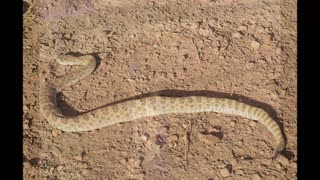 1:59
1:59
10MileRanch
9 months agoNight Hike Rattlesnake
3 -
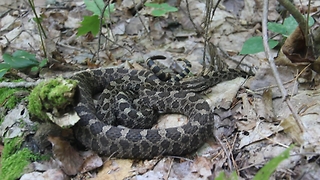 1:01
1:01
WildCreatures
5 years ago $8.20 earnedHiker encounters two rattlesnakes on trail near her feet
2.58K -
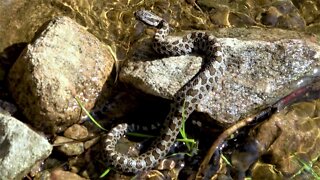 1:12
1:12
KristysWorld
1 year ago $7.78 earnedBaby rattlesnake suns himself beside dock at family cottage
26.5K142 -
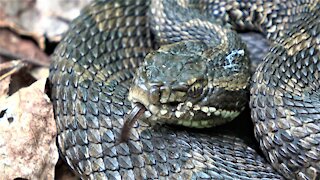 1:32
1:32
WildCreatures
2 years ago $1.39 earnedFamily & dogs encounter large rattlesnake coiled on trail
8.02K27 -
 0:13
0:13
JOliver
8 months agoCoachwhip snake! #snake #wildlife #outdoors #nature #reptiles
159 -
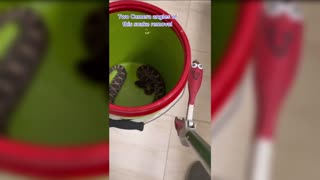 1:10
1:10
Fourthestate
1 year agoFEELING RATTLED: Professional Snake Wrangler Rescues Large Rattlesnakes From Homes
26 -
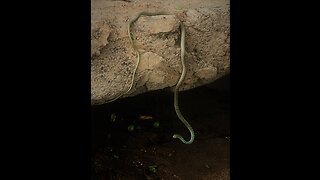 1:19
1:19
EmotionsofAfrica
5 years ago $0.02 earnedTourist films rare and strange snake behavior
2.57K -
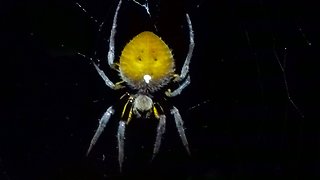 1:52
1:52
WildCreatures
5 years ago $2.57 earnedAmazon night hikers meet fascinating and terrifying creatures
7982 -
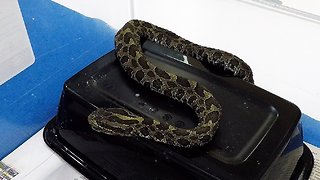 1:38
1:38
WildCreatures
5 years ago $0.15 earnedWild rattlesnake receives ingenious treatment from veterinarian for facial infection
2.27K3 -
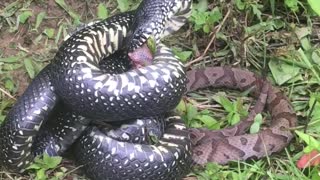 0:54
0:54
abays105
6 years agoKingsnake Caught Constricting Venomous Copperhead Snake
144K